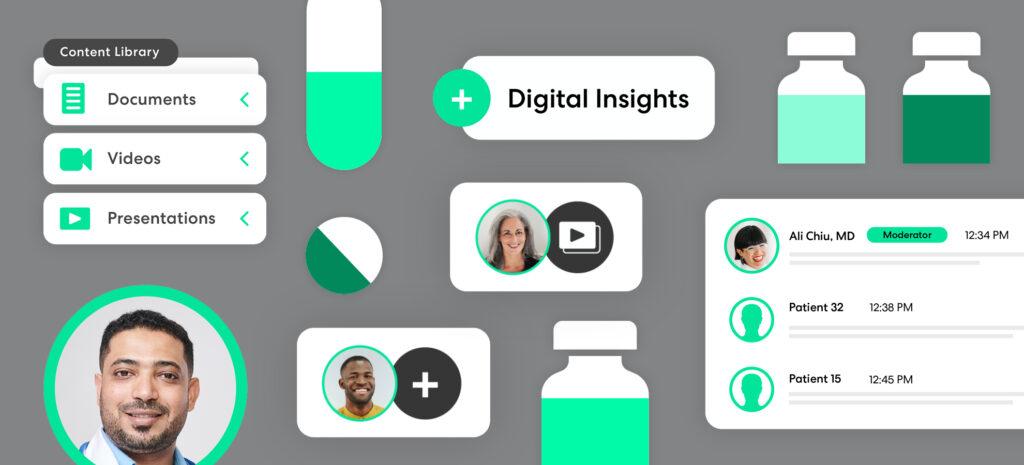Article updated November 2023.
What is launch excellence? In the pharmaceutical industry, launch excellence combines sound clinical data, a comprehensive marketing plan, accurate sales forecasts, and no small amount of luck. In other words, launch excellence is another term for operational excellence, in which all parts of a launch team are in sync and working toward a common goal.
A successful drug launch is an event that results from the work of high-performing teams. Launch excellence requires a high degree of cross-functional coordination and accuracy under the threat of various complications – including regulatory requirements, patent cliffs, increasing R&D costs, shrinking sales teams, and a complex commercialization stage.
Without needed insights, what’s at risk? We asked industry leaders.
No matter how much effort you put into launch planning, drug commercialization is never straightforward, and making it to launch is no guarantee of success. From 2009 to 2017, 40% of drug launches failed to meet their two-year sales goals. As a result, many pharma companies are forming pharma launch excellence teams to anticipate and avoid potential difficulties. This article will explore why launches fail, strategies to avoid problems, and how technology is helping life science teams have more successful launches.
According to McKinsey:
“Launch is a critical capability in biopharma…Yet biopharma operations – including production process development and the transfer of such processes to commercial facilities – are very complex and time-consuming. By understanding the complexities and managing them better than rivals do, biopharmaco players can boost the odds of a successful launch – product after product.”
How are life science companies working to achieve this? Many organizations are building capabilities to prepare for increasing uncertainty in the world and their operations, leaning on tactics like personalization and digital enablement to increase the chance of success during launch. This is happening for various reasons – chief among them the monumental shifts in how people work and how pharmaceutical companies engage with HCPs.
Why do pharma product launches fail?
Unforeseen circumstances cause some pharmaceutical launch difficulties, but most can be avoided with diligence and a strong launch strategy. Here are some common problems that can often derail a product launch:
- Regulatory intervention
- Overly aggressive sales targets
- Miscommunication
These threats are common to every product launch – even outside the life science industry – and cautionary tales abound. Diving into some notable failures, it’s clear that attention to detail and cross-functional coordination is key to avoiding problems that are, well, avoidable.
RELATED CONTENT
Launch excellence and medical affairs teams, in more detail
Medical affairs’ role in product launches and the healthcare landscape has evolved. Medical affairs teams are essential before, during, and after commercial launch – and as such, they sit at the center of regulatory, clinical, market access, and commercial activities.
According to the Medical Affairs Professional Society, these areas of influence still exist. However, the function of medical affairs organizations has changed from a support role to a strategic role, mainly in response to external stakeholders – including KOLs, HCPs, patients, caregivers, advocacy groups, payers, and policymakers – setting higher standards for the scientific evidence needed to support launch excellence before market entry and broad patient access.
Listen to medical affairs leaders from Novartis, Genentech, and Myovant Sciences discuss launch excellence in an on-demand webinar.
Product positioning is another vulnerability at launch. This is often down to a company’s failure to segment its potential audience properly and instead going to market with one-size-fits-all messaging for physicians and patients.
As most consumers know, “one size fits all” rarely fits all – or even most. Physicians are not a monolith, and while some will be innovators willing to be at the leading edge of new products and treatments, others will wait to gauge a product’s efficacy before they consider prescribing it.
Strategies for a successful pharma launch
While every organization has its internal launch excellence team, some common processes and procedures can reduce mistakes and drive a successful launch campaign and market introduction.
- Train the team. Now that technology – including insights management platforms – offers life science teams the capability to deliver training to global audiences, launch training takes less time and is less costly than traditional face-to-face training. Educating the launch team and other stakeholders on responding to potentially negative events can ensure a more coordinated launch effort.
- Test the message. Message testing with both physicians and patients can provide helpful information to guide launch strategies.
- Include patients. Patients can provide information about how they respond to messaging and their experience of living with a disease. Patient engagement is one area where a medical affairs launch excellence team can add value to a pharmaceutical product launch.
- Consult physicians. Physicians are consumers, too – they facilitate a product’s eventual use, and can be influential among other physicians. Life sciences teams can conduct message testing or focus groups to understand how physicians will respond to a product.
- Engage KOLs. KOLs are critical as you take a product to market. Experts recommend using virtual engagement to create interactive opportunities for KOLs to share their opinions about different diseases, therapeutic areas, and a pharmaceutical new product launch.
- Obtain feedback and improve. Launch teams should have a process for monitoring their success and making adjustments on the fly. Making continuous improvement efforts can head off large, complex problems by addressing smaller issues as they arise.
Two critical impediments to launch excellence – and one solution
Reductions in HCP visits dropped drastically beginning in 2020 and are unlikely to fully recover. US physicians expect a 15 percent reduction in overall interactions with pharma, with all of that decline coming from in-person interactions. Organizations increasingly rely on asynchronous online engagement within platforms like Within3 for KOL and HCP engagement.
In a digital environment, it’s easier for medical affairs teams to obtain actionable insights in less time and at less cost than legacy engagement methods, which can be critical in short-term windows post-launch. The Within3 platform helps teams achieve 3-7x the amount of actionable insights while eliminating up to 90% of the workload associated with analysis and reporting.
Insights management technology for launch excellence
If a launch plan lacks structure and critical success factors are unmet, it risks going off track. This risk is even greater with multiple launch teams without a central coordination point. An insights management platform can serve as a single source of truth for many phases of product development for pharma companies, including elements of a successful launch and forming a cohesive cross-functional launch team.
Watch: How do you see medical affairs organizations improving launches over time?
Insights management for launch excellence – in the real world
Message testing for commercial teams is critical to bringing a product to market. One Within3 client, a global pharmaceutical company, planned to introduce a new delivery method for a successful biologic drug to treat chronic disease. Typically, this drug is administered in a physician’s office via prefilled syringe every six weeks. The new method was a self-administration mechanism that patients use on the same schedule without going to a doctor’s office or clinic. The company wanted to inform physicians of the new delivery format in an efficient, impactful way that would not require too much time from an HCP’s busy schedule.
The company engaged a group of contracted HCPs to provide input during two virtual meetings conducted via the Within3 insights management platform. The group consisted of physicians who were asked to look at a proposed advertisement and provide feedback on the following key items:
- Whether the ad made clear it was the same drug HCPs were accustomed to prescribing but in a different format
- Whether the new delivery method was apparent, given the messaging restrictions
- If the news of the new format would change physicians’ minds about prescribing the drug
The pharmaceutical company learned about HCP preferences for physician-targeted messaging, including that doctors prefer materials to be patient-focused and include information about efficacy. The HCPs also said they would not uniformly switch all patients to a self-administration method, providing valuable feedback to help the pharma company tailor its launch strategy.
Rather than multiple streams of emails, documents, and other disparate forms of communication, life science organizations are using the capabilities of an insights management platform to streamline and organize launch plans. This might take the form of an online resource center to eliminate concerns about version control, social media listening before, during, and after a pharma product launch to monitor conversations on public forums, asynchronous discussions for message testing or other forms of insight gathering, and collating and analyzing incoming observations and notes from field teams.
To learn more about how insights management works for life science teams, read our blog series or download our e-book.






